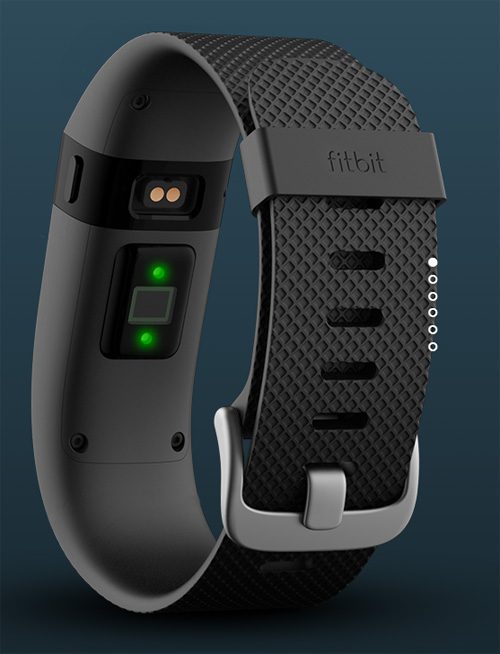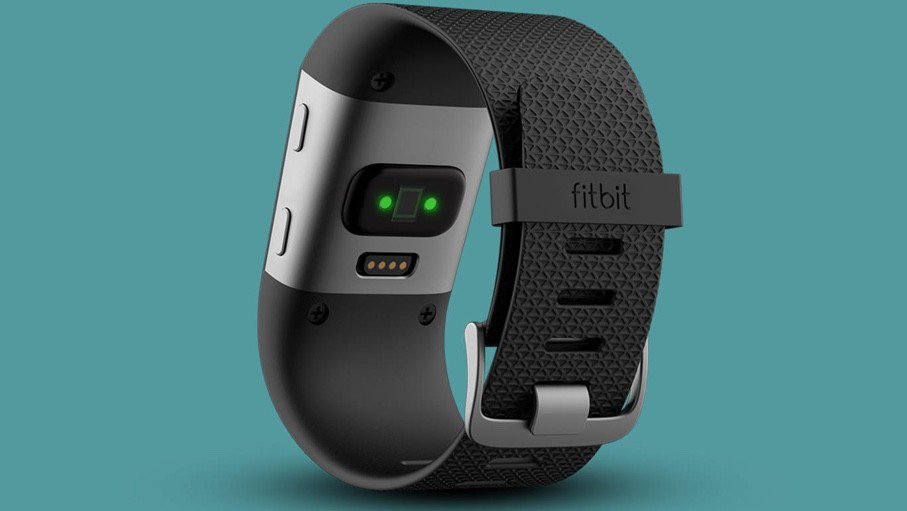Fitbit Charge HR – Hear Rate Sensor
Fitbithas two latest activity trackers coming in early 2015 wherein, both the Fitbit Charge HR as well as Fitbit Surge feature heart rate monitors together with a bunch of other fitness and activity tracking features. Fitbit’s new Charge HR fitness band emphasis is on wearability with slim and light form factor but will maintain a wealth of health tracking features which include real time heart rate sensor as well as on-board display. The Fitbit Charge HR tends to be a more advanced version of the Fitbit Charge that was released on November 17, 2014. Part of the company’s line-up product, Charge HR is built on the last year’s Flex fitness band accompanied with a bright blue OLED display together with advanced sensor package with altimeter in order to count stairs while mounting and optical heart rate monitor which has been dubbed `PurePulse’. When compared to the older Fitbit models, the most striking addition is a small though crisp OLED display which enables the user in keeping track of the steps taken, it’s resting heart rate, calories burnt together with incoming calls. On pressing the multifunction button placed towards the left area of the display enable to turn it on while various presses cycle through the menu options configurable through the Fitbit iOS app or Web tool.
The Charge HR unlike other devices in Fitbit’s stable has a proper buckle strap made of flexible elastomer for a comfortable, yet a secured fit and has a more customized fit though it keeps the optical heart rate sensor in constant contact with the skin for accurate readings. The device so far has been capable of consistently finding and monitoring the pulse which is difficult task for a forest of thick arm hair where other optical systems seem to have failed in the past and the electrode based sensors are not suitable for these specific needs. The Charge HR, like the Charge, is an activity tracker wristband which portrays fitness stats on the wrist unlike the Jawbone Up24 that does not have a real time stats display on the band. All the Fitbits have a MEMS 3 axis accelerometer which measure motion patterns to determine the steps taken, distance travelled active minutes as well as the calories burnt.
Features an Altimeter
Both the Charge and the Charge HR have a clock and one can ditch the watch if one desires though many prefer wearing the fitness band with their wristwatch. Besides this, the Fitbit Charge and Charge HR features an altimeter which can measure the floors climbed, inducing the person to climb the stairs instead of taking the lift or to take the uphill route to work instead of the easier option. The Charge HR is not the multi-sports powerhouse that is the Fotbit Surge though with the Chargeone can utilise it to log workouts and through the app can see monthly exercise plan. With the Mobile Run, one can track run, walk and hike stats as well as map routes with the help of the iPhone’s GPS while the Surge has its own built-in GPS and these functions unfortunately are not quite available yet on Android.

 How SASE Solutions Empower Productive Workforces in a Digital Era
How SASE Solutions Empower Productive Workforces in a Digital Era  Excel vs PDF: Which Dominates Document Sharing in 2025? (Data-Driven Comparison)
Excel vs PDF: Which Dominates Document Sharing in 2025? (Data-Driven Comparison)  TitaniumInvest.com Money 2024: AI‑Driven Tools Outperform Traditional Banking
TitaniumInvest.com Money 2024: AI‑Driven Tools Outperform Traditional Banking  Why Your Link Building Efforts Might Fail
Why Your Link Building Efforts Might Fail  How to Request or Give Remote Control in a FaceTime Call on iPhone
How to Request or Give Remote Control in a FaceTime Call on iPhone  The Rise of Intelligent Automation in Business Operations
The Rise of Intelligent Automation in Business Operations  The Best Ideas for Designing Your Custom Printed Ring Binder
The Best Ideas for Designing Your Custom Printed Ring Binder  How Technology is Changing the Way We Play Hearts
How Technology is Changing the Way We Play Hearts  The Rise of Open Source: A Journey to Innovation and Collaboration
The Rise of Open Source: A Journey to Innovation and Collaboration 
